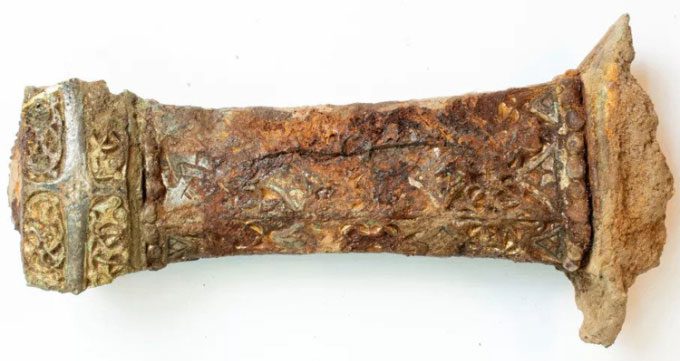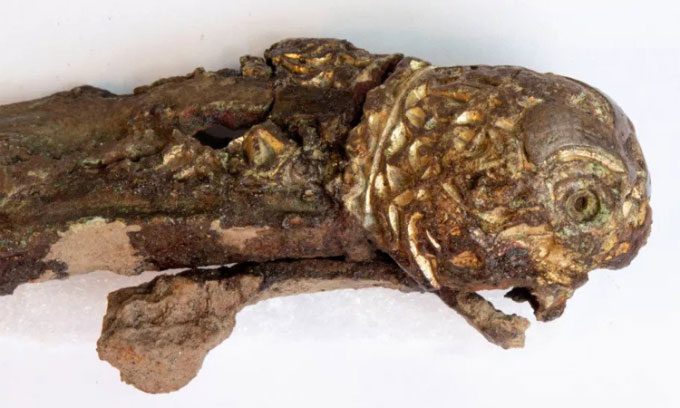The ancient sword is missing its blade but features an intricately decorated hilt with exquisite engravings and details in gold and silver.
Experts have successfully reconnected two pieces of an exquisite Viking sword that had been separated for approximately 1,200 years, as reported by Live Science on June 10. Amateur treasure hunters in Norway discovered the pieces a year apart.

The hilt of the Viking sword is intricately decorated. (Photo: Lise Chantrier Aasen/Stavanger Archaeological Museum)
The first piece was found by a metal detectorist in Stavanger, located on Norway’s west coast, while scanning around a farm. The man handed over this small and unusual piece of metal to the local archaeological museum. This spring, a friend of his unearthed the remaining piece nearby.
“The sword is of a rare type, originating from the Scandinavian Peninsula but also found in Western Europe (modern-day France, England, Ireland) and Eastern Europe, such as Hungary,” said Ann Zanette Glorstad, an archaeologist at the University of Oslo.
The sword is missing its blade, but the hilt is elaborately decorated with numerous intricate engravings and gold and silver details. Each end of the hilt (the part between the blade and hilt) features a design resembling an unidentified animal.

Both ends of the hilt depict the head of an unidentified animal. (Photo: Lise Chantrier Aasen/Stavanger Archaeological Museum)
Based on the decoration, Glorstad believes that the sword may have been forged in the Frankish Empire or England around the year 800. However, it is also possible that a skilled Norwegian blacksmith created it, inspired by weapons from the Frankish Empire. Of the approximately 3,000 Viking swords found in Norway, only about 20 are similar to this newly discovered weapon. The identity of its owner remains a mystery.
“We can only speculate about who the sword belonged to. It is an impressive sword with intricate decorations, so it must have belonged to someone capable of owning it, someone wanting to demonstrate their social status,” Glorstad said.
Swords from this era sometimes had the owner’s name engraved on the blade, according to the Chicago Art Institute. However, the blade of the sword in Stavanger is missing, so archaeologists will have to rely on other clues to determine its owner’s identity.
In 1883, not far from where the sword was discovered, the grave of a wealthy Viking queen was excavated. “We know that this area is of particular significance, but finding such a sword is still quite surprising,” shared Hakon Reiersen, an expert at the Stavanger Archaeological Museum. The sword is currently in the museum’s collection and is expected to be displayed after careful restoration.





















































